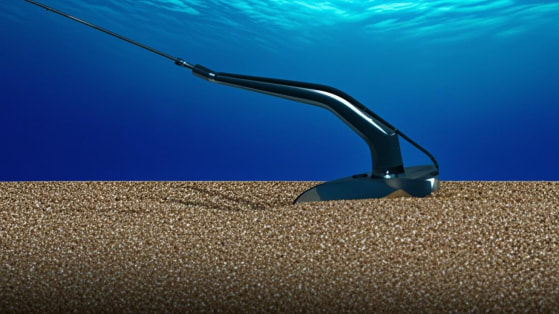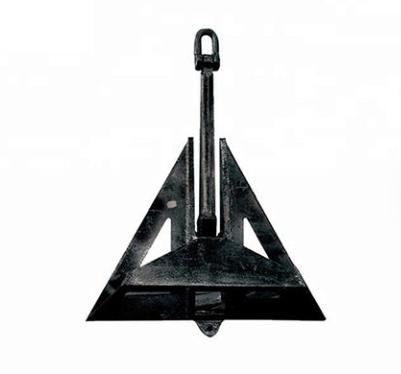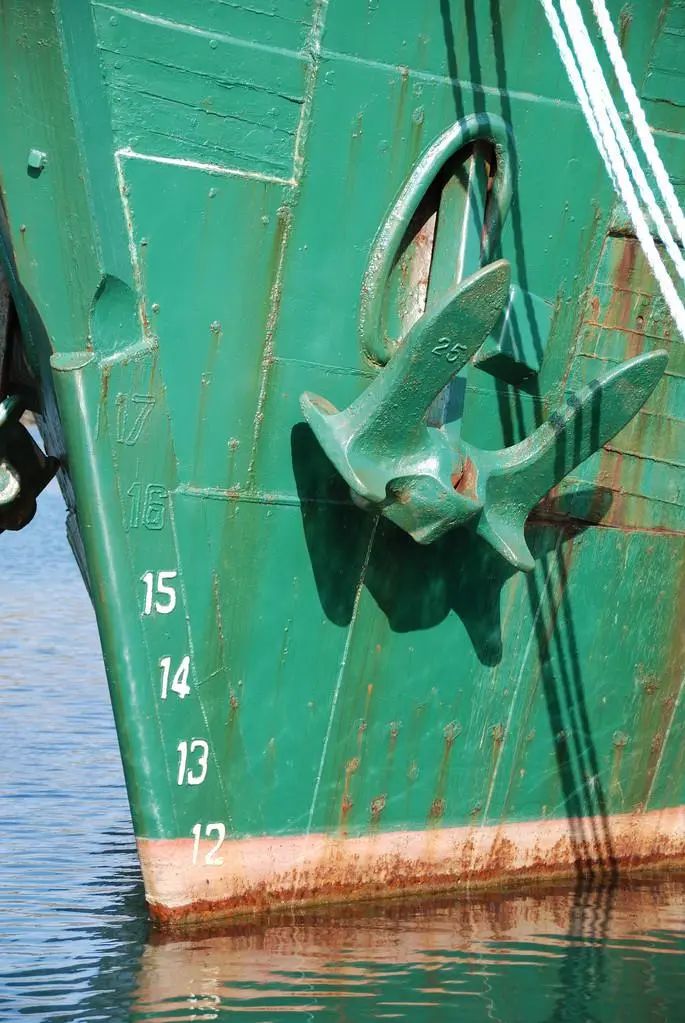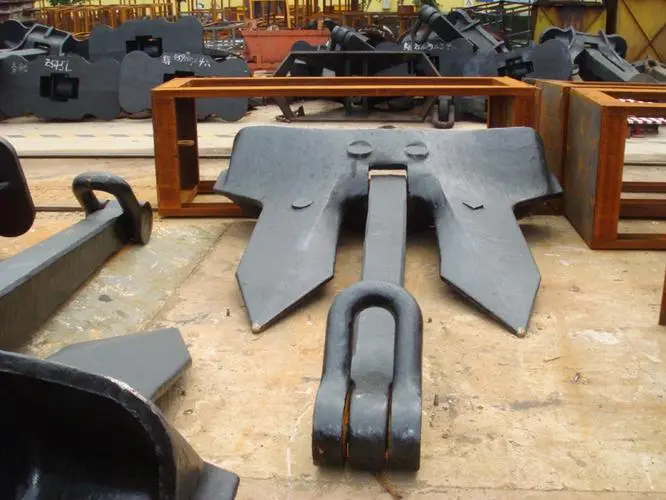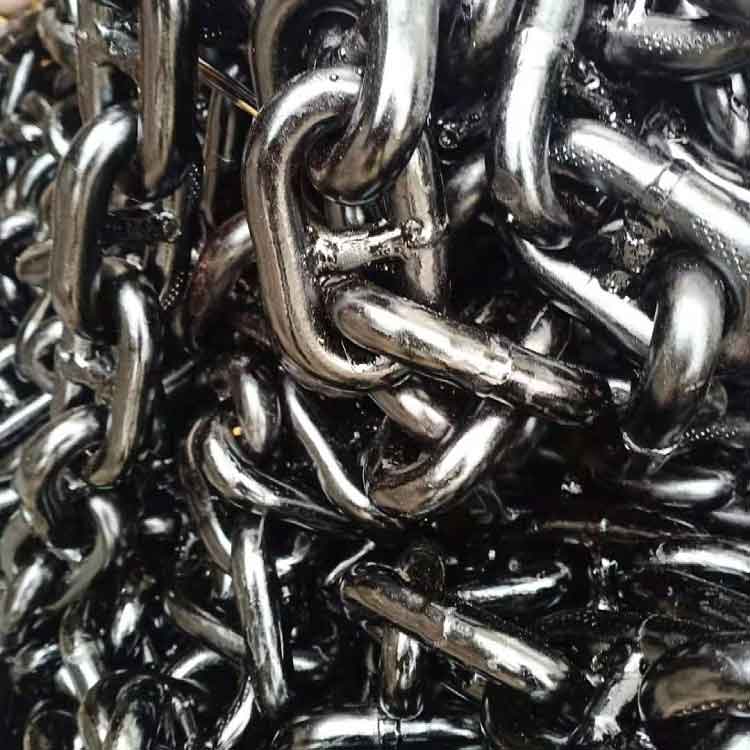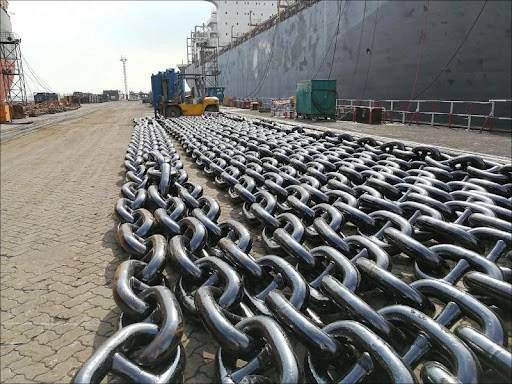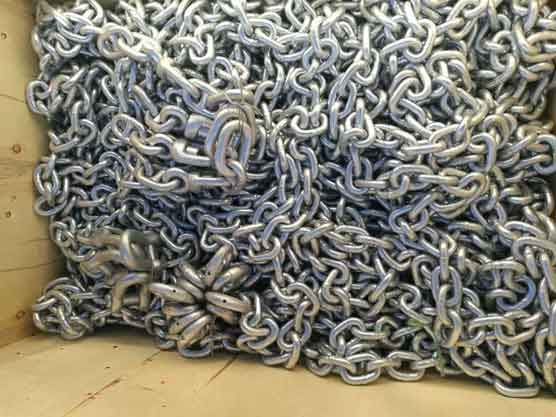Anchor Chain is the part that connects an anchor to a ship or structure, anchor rod (or anchor cable). It consists of multiple chain links that resemble a closed loop. Each ring is connected to its adjacent ring, thus creating a chain of any given length. The purpose of the anchor chain is to fasten the anchor to a part of the ship so that it can be easily towed up when needed. So, what does a complete anchor chain consist of? How to quickly identify the length of the anchor chain in the water when raising the anchor? This article will focus on the composition and marking of anchor chains.
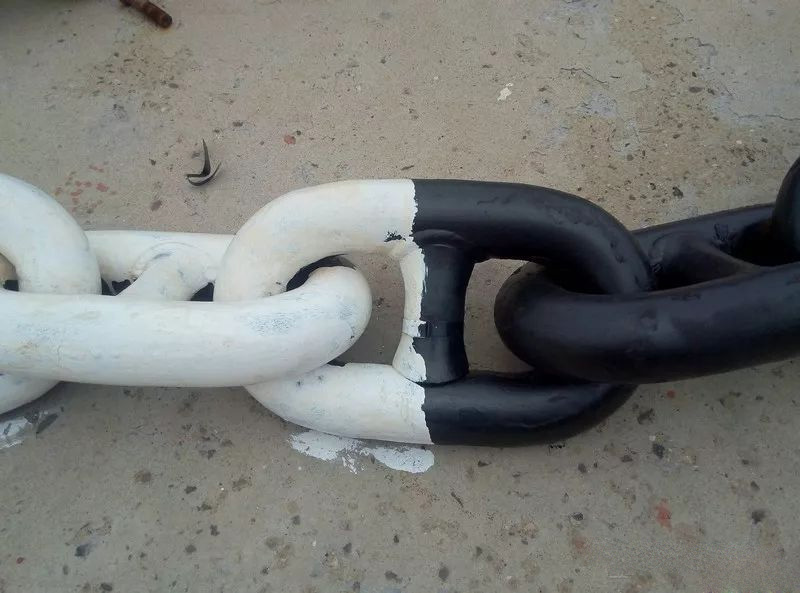
1. What is The Composition of Anchor Chain?
Anchor chain is a chain connecting between anchor and hull, which is used to transmit and cushion the external force to the ship.
A complete anchor chain consists of several sections of anchor chain connected by connecting links or connecting shackles, and each section of the anchor chain is composed of many links.
According to the structure of the chain ring, the anchor chain is divided into two types: stud link chain and studless chain. When the size and material are the same, the strength of stud link chain is greater than that of studless chain, and the deformation is smaller, and it is not easy to twist when stacking. So it is widely used on sea ships. studless chains are generally only used for small boats.
According to the manufacturing method, the anchor chain is divided into casting anchor chain, electric welding anchor chain and forging anchor chain. In modern shipbuilding, the most used is the welding anchor chain, the casting anchor chain has been rarely used, and the forging anchor chain has almost disappeared. The steel grades of stud link chain anchor chains used to produce stud link chains are divided into 3 grades: AM1, AM2 and AM3. AM1 anchor chain steel is calming steel, and AM1 anchor chain cannot be used for high-holding anchor and super-large holding anchor. AM2, AM3 anchor chain steel is calming fine crystal treatment steel and AM3 anchor chain is only suitable for anchor chain with chain diameter of 20.5mm or above. For the same ship, if steel with high strength is used, the size of the chain link can be appropriately reduced.
According to their function, anchor chain rings are divided into ordinary rings, enlarged rings, chain end rings, swivel forerunners, chain end shackles, and connecting shackle.
The size of the chain ring is expressed by the diameter of chain ring d, as shown in the following figure. The cross-sectional diameter of the normal stud link chain ring is d, the length of the normal stud link chain ring should be 6 times diameter d of the cross-section of chain ring, and the width B should be 3.6 times of d. The length of enlarged chain ring is 6.6d, and the width is 4d. Kenter shackle is 6d in length and 4.2d in width. The standard link for measuring the strength of anchor chain is ordinary chain link. The diameter of ordinary chain link is a measure of the strength of anchor chain.
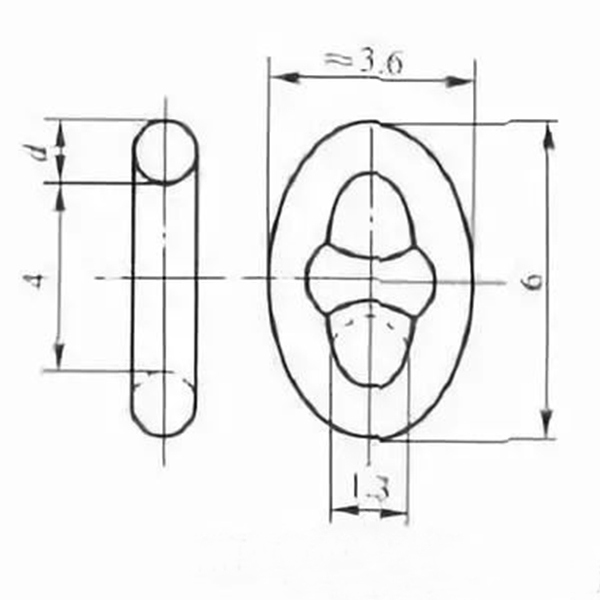
Stud Link Chain Ring 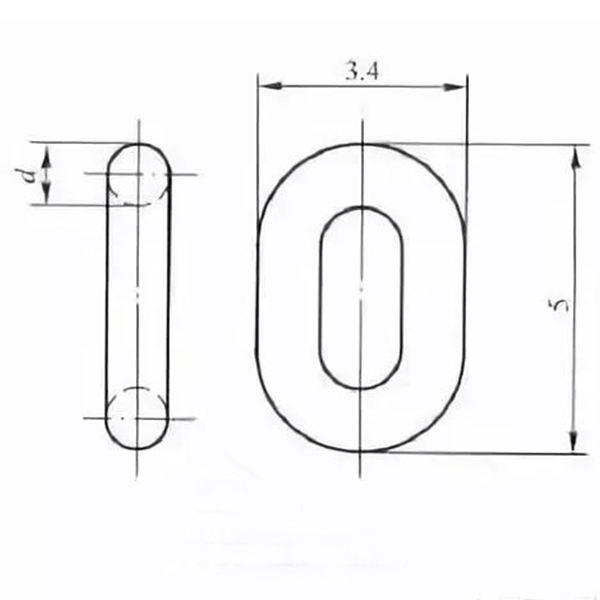
Studless Chain Ring 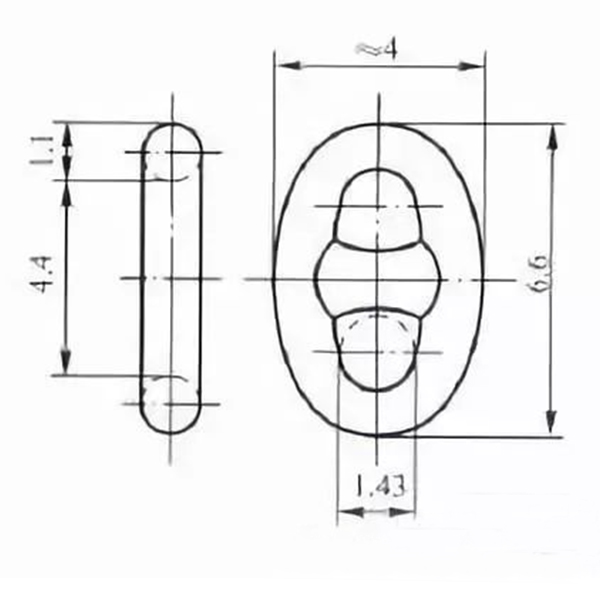
Enlarged Chain Ring 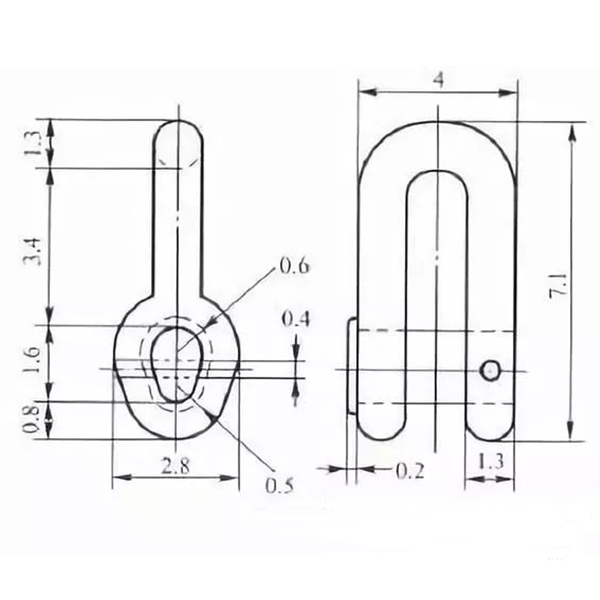
Connecting Shackle
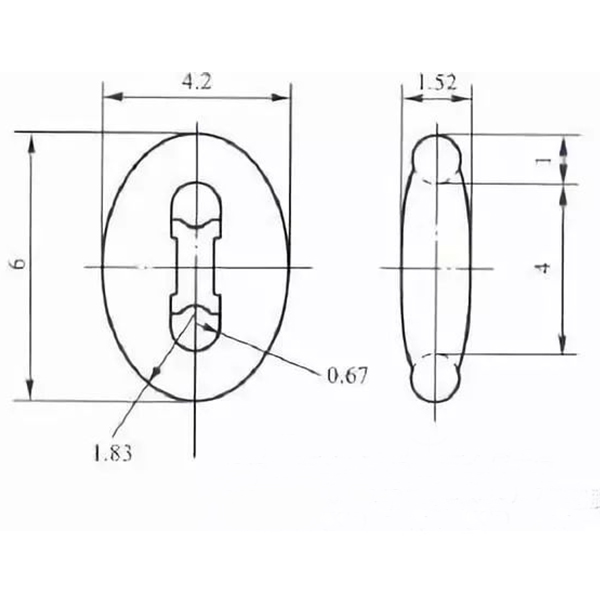
Kenter Shackle 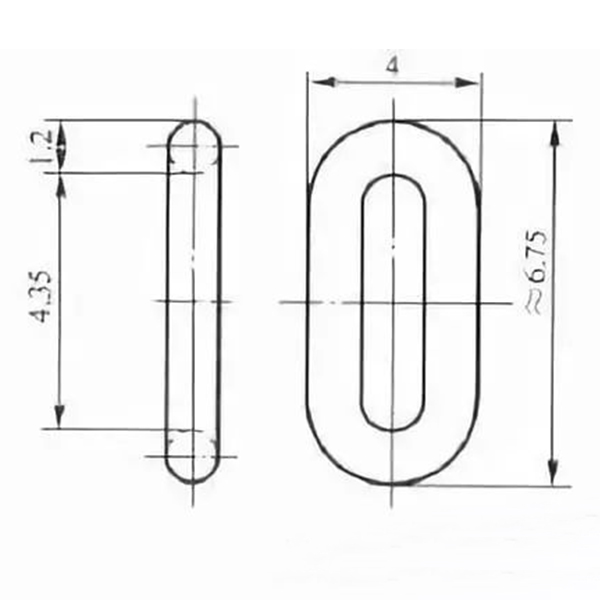
Chain End Ring 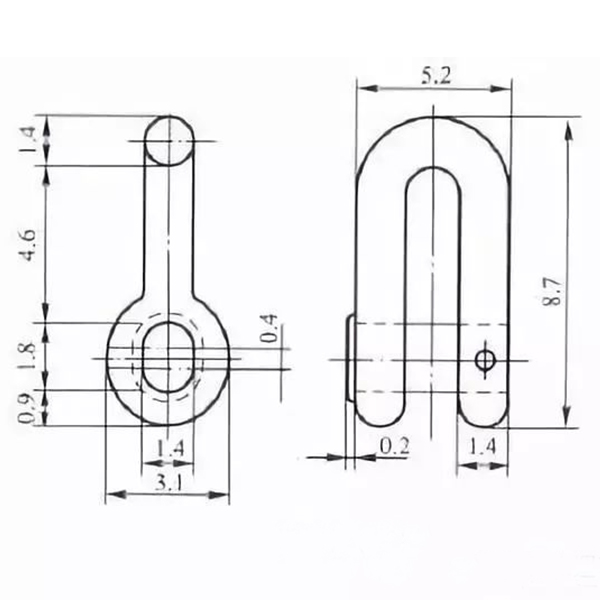
End Shackle 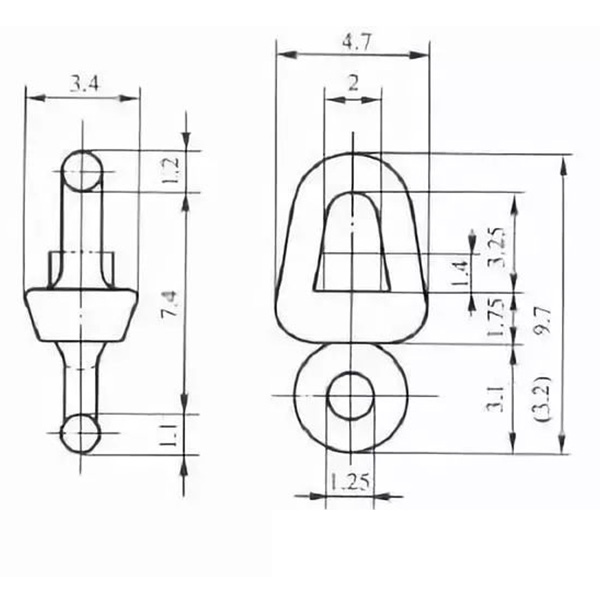
Swivel Forerunner
The length of anchor chain is “section”, and the standard length of each section of anchor chain is 27.5m, and the number of rings of each section of anchor chain should be odd.
The chain links are mostly connected by connecting rings or connecting shackles. If connecting rings are used to connect each section of the anchor chain, the two ends of the connecting rings are ordinary chain links. If connecting shackles are used to connect each section of the anchor chain, both ends of the connecting shackles are connected to the end ring (also known as studless chain) in turn, the ring is enlarged, and then the ordinary ring is connected to ensure a smooth transition of strength.
The stud link chain is mainly composed of stud ring, and each anchor chain is composed of anchor end rings, middle rings and end rings. A complete anchor chain consists of ordinary rings, enlarged rings, end rings, connecting rings or connecting shackles, swivel forerunners and end shackles.
The anchor end link is the first link of anchor chain and is connected to the anchor. The end shackle and the anchor shackle in this link should have the cross pin towards the anchor, i.e. the arc part towards the middle link. The ring pin of the swivel should face the middle link to reduce friction and jamming. The purpose of setting the swivel is to prevent excessive twisting of the anchor chain.
The chain end ring is the last link of anchor chain and is connected to chain discarder. The bolt of the swivel ring should also face the middle link.
If the intermediate link is connected with a link shackle, the circular part of the link shackle should face the anchor to avoid jumping, impact and jamming when the anchor is thrown up and passes through the chain holding wheel.
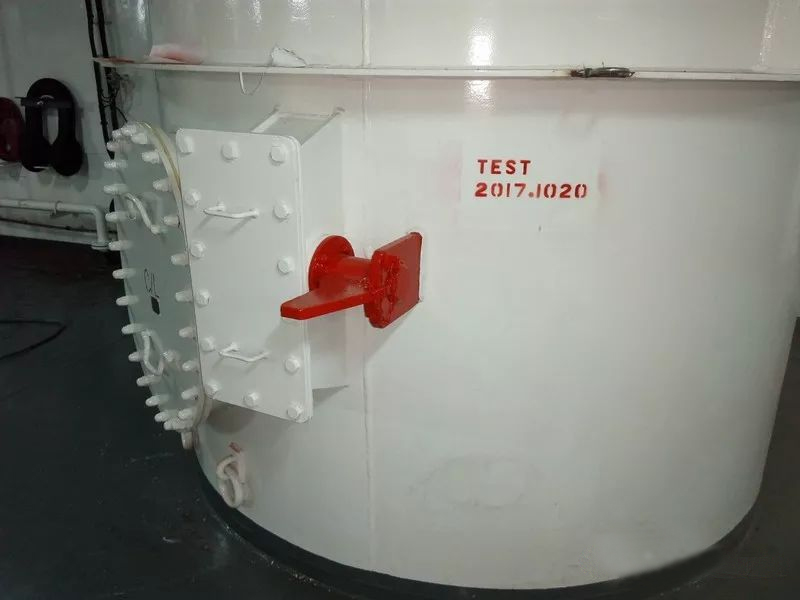
2. How to Mark an Anchor Chain?
In order to quickly identify the loose length of the anchor chain when throwing up the anchor, and to grasp the length of the anchor chain in the water when starting the anchor, it is necessary to mark each connecting link and its nearby stud links.
The method is:
- Wrap the metal wire (or white steel ring) on the front and back of the first chain link with a chain link (or shackle) between the first and second sections, and wrap the wire between the two chain links.
- The first link is indicated by white paint on the chain link and red paint on the connecting link.
- Wrap wire (or white steel ring) around the second stud link between the 2nd and 3rd link on the front and back of the connecting link. And paint white on all the stud links between two chain links, paint red on the connecting links to indicate the second link.
- And so on until the fifth and sixth quarters. Starting from the connecting link between the sixth and seventh sections, repeat the same method for the first section to the sixth section to mark.
- The last one to two sections can be marked with red or yellow paint as a warning that the anchor chain will reach the end of the danger to prevent loss of anchor.
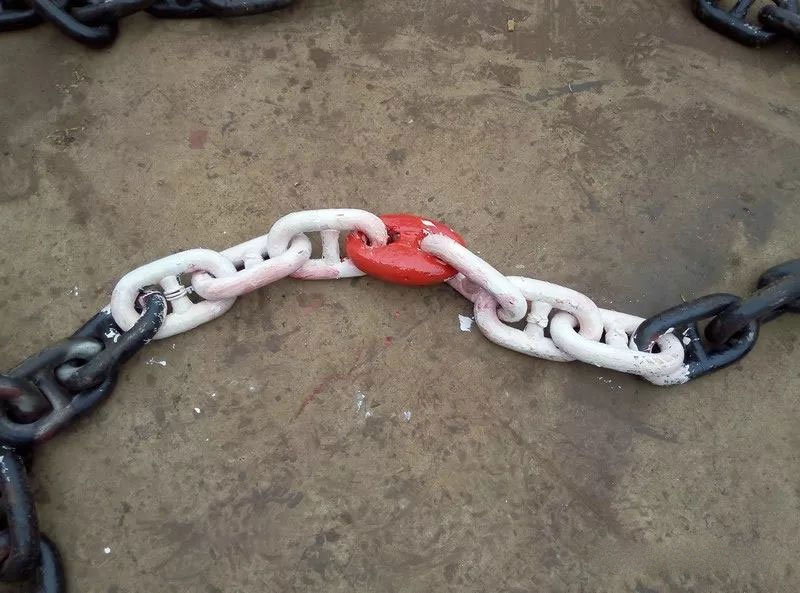
Anchor chain grade comparison table of national classification societies
| Anchor chain name | National classification society anchor chain grade | ||||||
| CCS | LR | ABS | DNV | GL | BV | NK | |
| Grade 1 stud link chain | AM1 | U1 | Grade1 | NVK1 | GL-K1 | BV-Q1 | Grade1 |
| Grade 2 stud link chain | AM2 | U2 | Grade2 | NVK2 | GL-K2 | BV-Q2 | Grade2 |
| Grade 3 stud link chain | AM3 | U3 | Grade3 | NVK3 | GL-K3 | BV-Q3 | Grade3 |
Some common questions about anchor chains
Question 1: Why should the number of links in each anchor chain be odd?
Kenter shackle is generally used to connect each anchor chain, and its size is larger than other stud link chains. We know that the connection between each link of the anchor chain is 90° vertical. That is, one chain link lies horizontally, and the next chain link should be vertical. When designing the anchor chain plate of the windlass, there is also a horizontal groove and a vertical groove. When the sprocket pulls the anchor chain upward, it leans against the horizontal groove. Struggling to drive the anchor chain upwards. Because the Kenter shackle is relatively fat, it can only lie in the horizontal slot, and the vertical slot cannot be stuck. If the vertical slot is enlarged to fit it, it will cause other ordinary links to loosen in it.
When the number of links per link is odd, it can ensure that the Kenter shackle connected to it is always on the even number. Then it can ensure that the Kenter shackle always falls in the horizontal groove. If the number of links is even, the Kenter shackle will be in the odd link for a while, and in the even ring for a while. Then it will be in the horizontal groove for a while, and in the vertical groove for a while, which will not work according to the above explanation.
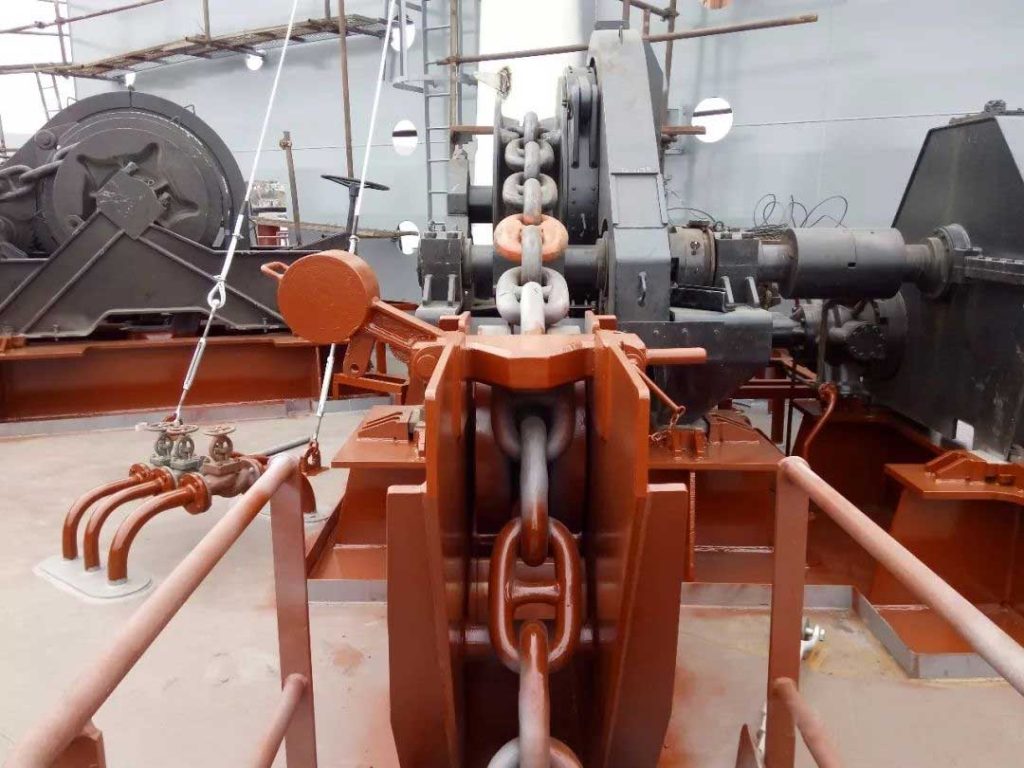
Question 2: Why do some ships have a different number of anchor chain links port and starboard?
The number of anchor chains on the ship has been calculated, and the number of anchor chains is calculated by the final outfitting calculation to find the corresponding anchor chain length requirement, and then divided by 27.5m. If it is an even number, it is divided equally between port and starboard. If it is an odd number, there is only one more section on one side, usually on the starboard side. Because it is said that, the port side is close to the port in the past, then the water on the starboard side will be slightly deeper, so add a little more section to the starboard side.

